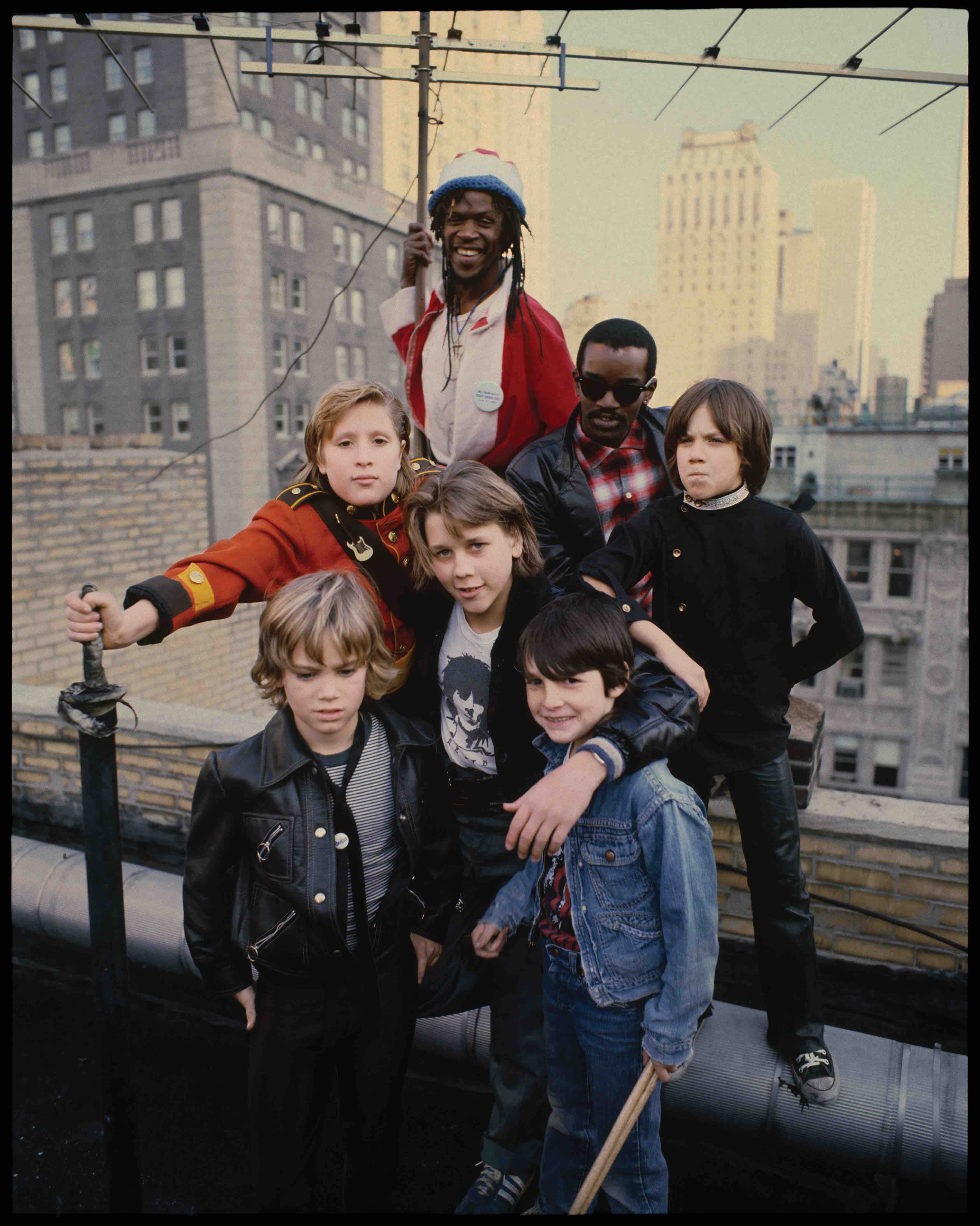Chris Stein of Blondie talks shooting NYC’s ragged heyday
- Text by Niall Flynn
- Photography by Chris Stein

Chris Stein came of age in a New York City that’s since been lost.
As co-founder and guitarist of new-wave leaders Blondie, the Brooklyn native was a stalwart of the city’s creative scene throughout the ’70s – a time when renting an apartment for $100 a month was still a viable reality for an artist.
As well as the music, however, Stein was also an accomplished photographer. Though things really took off in his late teens when he began studying at New York’s School of Visual Arts, he first started taking pictures long before that, as a “little kid” with a “little brownie camera”.
 “I just really enjoyed the time travel aspects of photography, I’d get very absorbed into an image,” he remembers.
“I just really enjoyed the time travel aspects of photography, I’d get very absorbed into an image,” he remembers.
“When everybody saw [1966 film] Blow-Up, they all wanted to be a photographer. All the kids I knew who were dabbling in photography, that was a big inspiration for them.”
Now, the photos that Stein took during NYC’s heyday have been collated for a new book titled Point of View: Me, New York City, and the Punk Scene.
From the apartments that he and his bandmates lived in, to the parties they attended and the venues they played, the book presents an intimate visual history of the city’s music and art scene, captured from the inside.
 “Everyone in the music scene was really isolated. Nowadays, there’s a lot of great punk bands in New York, but they’re connected – almost worldwide – to this whole community.”
“Everyone in the music scene was really isolated. Nowadays, there’s a lot of great punk bands in New York, but they’re connected – almost worldwide – to this whole community.”
“We were pretty much off by ourselves. It wasn’t a big area and the [creative] scene was very incestuous. it was the same bunch of people up until ’75, ’76.”
Those people – Bowie, Warhol, Burroughs, Iggy Pop, and, naturally, Debbie Harry – provide the book’s iconic cast, though Stein’s lens goes further than just his friends and contemporaries. Alongside the likes of the aforementioned, street photography and candid shots of the city’s residents make it an all-encompassing portrait.
 “It was different then. It wasn’t a time where everybody had a fucking camera. I think if you had a camera, you got a little bit of credit just from the fact you had this thing, this object,” he says.
“It was different then. It wasn’t a time where everybody had a fucking camera. I think if you had a camera, you got a little bit of credit just from the fact you had this thing, this object,” he says.
“Sure, everyone complained about New York being horrible, but nobody wanted to leave. It was a nice period – and exciting, too. My age keeps me from going out all the time, but there are kids who still do this stuff. Maybe the context is a little bit different. But it’s still there.”

 Point of View: Me, New York City, and the Punk Scene is out now from Rizzoli.
Point of View: Me, New York City, and the Punk Scene is out now from Rizzoli.
Enjoyed this article? Like Huck on Facebook or follow us on Twitter.
Latest on Huck

Clubbing is good for your health, according to neuroscientists
We Become One — A new documentary explores the positive effects that dance music and shared musical experiences can have on the human brain.
Written by: Zahra Onsori

In England’s rural north, skateboarding is femme
Zine scene — A new project from visual artist Juliet Klottrup, ‘Skate Like a Lass’, spotlights the FLINTA+ collectives who are redefining what it means to be a skater.
Written by: Zahra Onsori

Donald Trump says that “everything is computer” – does he have a point?
Huck’s March dispatch — As AI creeps increasingly into our daily lives and our attention spans are lost to social media content, newsletter columnist Emma Garland unpicks the US President’s eyebrow-raising turn of phrase at a White House car show.
Written by: Emma Garland

How the ’70s radicalised the landscape of photography
The ’70s Lens — Half a century ago, visionary photographers including Nan Goldin, Joel Meyerowitz and Larry Sultan pushed the envelope of what was possible in image-making, blurring the boundaries between high and low art. A new exhibition revisits the era.
Written by: Miss Rosen

The inner-city riding club serving Newcastle’s youth
Stepney Western — Harry Lawson’s new experimental documentary sets up a Western film in the English North East, by focusing on a stables that also functions as a charity for disadvantaged young people.
Written by: Isaac Muk

The British intimacy of ‘the afters’
Not Going Home — In 1998, photographer Mischa Haller travelled to nightclubs just as their doors were shutting and dancers streamed out onto the streets, capturing the country’s partying youth in the early morning haze.
Written by: Ella Glossop